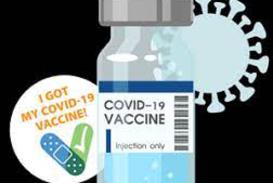Healthcare Medical Pharmaceutical Directory.com
Skilled Nursing Facilities - Long Term Care
Business Trends...
- Assisted living firms are entering the long term care (LTC) / skilled nursing facility (SNF) sector; ongoing consolidation in this fragmented market is well underway but COVID-19 has slowed its progress for now
- 2021 has LTC's continuing to revamp patient care services to thwart COVID-19 and account for threats by telehealth advancements that reduce admissions
- Scroll down for strategic insights, challenges and opportunities in Skilled Nursing and Long Term Care facilities
Nursing Facility Market Sector Overview
Nursing facilities (also referred to as Long Term Care (LTC) or Skilled Nursing Facility (SNF) are heavily regulated by Federal and State authorities; standards continue to demand more from caregivers. There are substantial business opportunities as well as challenges in this marketplace as more than half the persons 65 years of age or older in the United States typically require some form of supportive care. The average age of patients in nursing facilities is over 80 years of age and about 70 percent of them are female.
The impact of COVID-19 in Long Term Care and Skilled Nursing Facilities
COVID-19 continues its harmful and costly impact during 2021 in the LTC/SNF sector. Their challenges are steep:
- LTC and SNF facilities are high traffic buildings, in addition to employees and patients, there are friends, family members, physicians and therapists meeting with patients plus outside service vendors such as employees from HVAC, plumbing, vending machine, security, food and beverage and medical supply companies.
- Patients/residents are older and frequently have moderate to elevated chronic health issues which make them vulnerable to bacterial and viral pathogens
- LTC/SNF facilities are close communities, employees and residents are in near proximity to each over the course of each day and throughout the facilities they are in
- COVID-19 can survive on various surfaces for hours or days, is highly contagious and mobile due to expelled respiratoy droplets and its virility as a pathogen within humans is dangerously potent
Patients, employees and facilities of LTC/SNF have responded assertively to the dangers of COVID-19. Outside visitors are drastically reduced, vendors follow specific protocols when inside the facilities, social distancing between patients has been established, employees and residents know the specific preventative guidelines to follow plus gloves, facemasks and other personal protection equipment (PPE) are worn whenever appropriate and extensive sanitation measures are being followed.
Critical And Distinctive Differences Between Long Term Care And Assisted Living
There is a greater number of professional medical staff on premises in skilled nursing facilities than assisted living facilities. While most have a medical director overseeing facility care standards, registered nurses and therapists (physical therapists, speech therapists, occupational therapists) and various aides comprise the bulk of the staff
caring for patients on a daily basis. Credentialed staff are paramount to adequately care for patients in the nursing facility environment and their higher salaries are an integral element of the cost equation for nursing facility operations.
Depending on the patient and facility, the services provided in LTC/SNF may overlap with those provided in Assisted Living. An important and significant distinction is the level and frequency of care provided in LTC based on the patient's inability to function independently and without constant monitoring or support specified and required in compliance with medical, legal, payer and regulatory standards and definitions. LTC patients have a substantially greater need for frequent, more complex care in terms of functional and/or cognitive abilities which needs to be provided by higher level trained and certified staff on a daily basis.
Commercial Health Insurance Coverage / Long Term Care Insurance / Government Payer Reimbursement
Most of the reimbursement is through Medicaid (about 65%) or Medicare (15%), the remainder is self-pay or through insurance plans which cover nursing facility care. Some of the larger entities in this segment also operate long term acute care hospitals (LTACs), rehabilitative centers, assisted living residency properties and other specialized care providers. LTC costs on average increase approximately 4.45% annually. There are approximately 16,000 skilled nursing facilities in the United States; about 75% are for-profit enterprises, 25% are run by non-profit organizations and about 5% are run by government entities. Total resident capacity is about 1.8 million beds.
Patient Care Support And Caregiver Dynamics
Many families seek the assistance of LTC for older family members or younger relatives with disabilities. It is very difficult to anticipate and plan for LTC, demand can be highly variable and may have to be used over a period of several years. Economic challenges associated with care-giving can be substantial, whether it is through care family members or by paid assistance from personal care, homemaker services, adult daycare, home healthcare, assisted living or nursing home care. As the alternatives to nursing facilities (adult daycare, personal care, nurse-supported home healthcare) grow in popularity, nursing facilities are diversifying their business models and range of services.
Aging Baby Boomers And Economic Factors
With the aging of the Baby Boom Generation, this trend is ramping up. Of 10 million Americans currently needing some sort of LTC, over 5 million are ages 65 or older --over 1.7 million are ages 85 or older. These numbers are expected to double through the next thirty years, the resources required to provide even the current level of services will triple by 2040. This assertive growth curve is due to the rapid increase of the population ranging 85 or older plus the longevity of younger people with physical disabilities or intellectual disabilities.
While the LTC population is steadily increasing, the number of facilities to support them is expanding at a slower pace. Economic concerns are a continual concern for facility operators, patients and payers. The Center for Retirement Research estimates the percentage of future retirees not be able to maintain 80 percent of their last wage in retirement will increase from around 50 percent today to over 60 percent by 2035. Pensions and retiree benefits are being phased out, resulting in more out-of-pocket cost burden placed on individuals. Many individuals assume LTC is covered by Medicare and in most cases, it does not. LTC insurance is not something individuals prioritize and is often considered an "accessory" to other insurance they already have and/or supplemental to what they assume Medicare provides.
LTC Business Strategies
Moving forward, the LTC marketplace can be expected to change drastically. It is already undergoing rapid consolidation. Insurers in the past have attempted to bundle LTC insurance with other coverage in policies and that may be revisited as a way to better market it to the Baby Boomer generation. Long term care facilities are becoming more diverse in patient care services and featuring more "at home" attributes to them as persons are living longer. Facility operators are competing against each other and would like to extend the continuum of care for its residents to earlier ages. By being able to accommodate more patients at earlier stages of care needs and supporting them with additional care as needed as time goes on, long term care organizations have higher levels of patient retention which has a great impact on the reduction of peaks and troughs in revenue and reimbursement streams.
Healthcare Product Manufacturers
Personal and fixture cleaning supplies, bedding, linens, ostomy and wound care supplies plus durable medical equipment (walkers, wheelchairs, etc.) products are categories most frequently associated with skilled nursing facilities. An array of patient monitoring devices are also frequently used. Depending upon the size and scope of care individual facilities offer, the variety of products they utilize will vary. The nursing facility sector is an avid user of the discounts and services provided by group purchasing organizations.
Kindred Exiting LTC Sector
One of the industry sector leaders in this sector, Kindred Healthcare, is exiting the skilled nursing facility side of its business based on large financial losses. In October '16, it announced it is seeking to refocus its home care, rehabilitation and long-term acute care segments. Kindred is also reducing its long-term care hospitals (LTACs or LTACHs), planning to make it about one-quarter of the company’s business. The company used to be one of the largest U.S. skilled nursing chains with about 300 skilled nursing facilities, it now operates less than 100.
Healthcare Technology Is A Resource And A Competitor
Telehealth is an emerging care and technology resource that is rapidly growing. It can have a positive impact in the long term care sector. It enables patients to be cared for / monitored remotely via mobile technology and other digital means. For fragile, high care patients living within long term care facilities, telehealth can support clinician staff and the patient's primary care physicians with real time insights as to the condition of the patient without the patient being required to be bedridden. 2021 LTC business strategies may include them integrating telehealth services into their business model.
For some patients, telehealth can empower them to be remotely monitored while at home and reduce the need for the patient to be cared for in a long term care setting. From this perspective, telehealth may be a competitive force if it is administered via a care providing organization apart from a long term care entity such as a healthcare system / integrated delivery network ( IDN ). Revenue streams from the patient, commercial or government payers are directed into the healthcare provider organizations and not into the assisted living or long term care provider organization marketplace. Commercial payers prefer the greatly lower costs of a patient being cared for at home versus within an assisted living or long term care residence.
... This is list of the largest Long Term Care providers ...
... This section profiles the Long Term Care (LTC) market sector; scroll down for a list of the largest Long Term Care and Skilled Nursing Facility ( SNF ) operators ...
... SNF and LTC providers are investing heavily in IT to improve care and lower costs but as patient monitoring capabilities advance via mobile, wearable and other devices, more patients may be able to reside at home and this may prove to be a competitive factor against SNF and LTC operators ...
... This is list of the leading Senior Care Associations and Organizations ...
... Mergers and acquisitons are continuing throughout the long term care / skilled nursing facility sector...
... Get insights on the new HHS COVID-19 strategic immunization program underway with CVS and Walgreens ...
... Learn about "CareHub" a new application based on Alexa technology from Amazon to help seniors, their families and caregivers ...
...A healthcare industry business intelligence resource with marketing strategy insights for pharmaceutical and medical device manufacturers, healthcare provider organizations, medical software and technology enterprises, patient care service companies and management consulting firms spanning a global community of users from 50+ nations...


